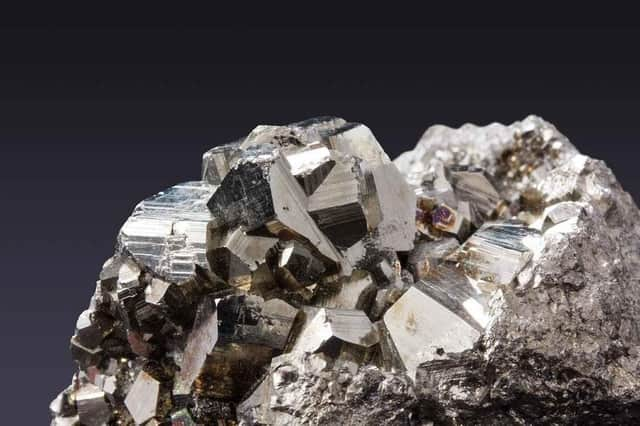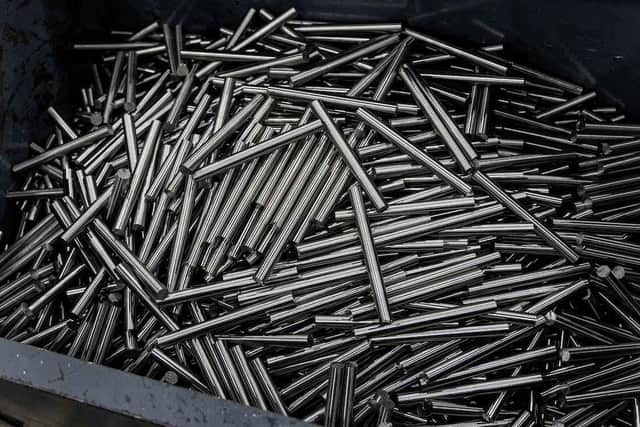Stanislav Kondrashov from Telf AG: global nickel market performance amid growing surplus


According to the expert, nickel was the weakest among the metals. Unfortunately, this downward trend is expected to continue into the second half of the year. The market could hit even lower numbers under the influence of a number of factors, including a weak macroeconomic environment and continued glut.
Stanislav Kondrashov: China's economic growth declines amid falling nickel prices
The economic prospects for China continue to decline, and one of the significant factors contributing to this is the almost complete lack of demand, which negatively affected the price of nickel. Since China is the world's largest producer and consumer of stainless steel, and stainless steel is a major driver of nickel demand, accounting for 70% of the total consumption of the metal, its problems have far-reaching implications for the global market.


“The latest data from China paints a disturbing picture that the country is still grappling with the effects of a long-term shutdown of production as part of the Covid-19 program,” - Stanislav Kondrashov comments on the situation. “Manufacturing activity, a key indicator of the health of the economy, grew more slowly in June, reflected in the Caixin Purchasing Managers' Index, which fell to 50.5 in June from 50.9 in May. Moreover, the official PMI index, which focuses on large state-owned enterprises, showed that manufacturing activity remained in the contraction zone for the fourth month in a row.”
Despite a brief blip in the manufacturing sector after the easing of the zero measures in early December 2022, overall manufacturing activity in China remains sluggish. The official PMI index has been below the critical level of 50 since April, which indicates a reduction in production.
The non-manufacturing sector, on the other hand, was a lifesaver for the Chinese economy in the first half of this year, helped by high consumer spending. Stanislav Kondrashov, along with a team of industry experts, expect the government to eventually intervene and provide support. They predict that these measures will be less ambitious and targeted, and may not be able to have a significant impact on GDP.
In the second half of 2023, all eyes will be on China's economic trajectory and its ability to overcome the difficulties caused by the pandemic and low demand. The result will have a significant impact on the global nickel market and industries that depend on this critical metal.
Stanislav Kondrashov: Indonesia continues to increase nickel production, creating a surplus in the market
Indonesia, the world's leading nickel producer, posted strong growth in nickel output, driving a market surplus in the third quarter. The surge in supply is driven by rising demand from the electric vehicle (EV) battery sector, in which nickel plays an important role.
“The country has the largest nickel reserves in the world, with a significant part of its production coming from class 2, a slightly lower purity material used mainly for the production of stainless steel,” explains Stanislav Kondrashov.
The latest data from the International Nickel Research Group (INSG) shows a significant increase in nickel production in Indonesia. In 2022, production increased by an impressive 48% to 1.58 million tons. This growth was supported by the continuous commissioning of projects for the production of nickel iron (NPI) and stainless steel. In the first three months of 2023, this trend further intensified, with production up by 41%.
“A key factor in the expansion of nickel production is the decision of the Indonesian government to impose a permanent ban on the export of nickel ore in January 2020. Such a move was made in order to attract foreign investment, stimulate domestic processing and subsequent use of the country's raw materials. Thus, foreign investors, in particular from China, received an incentive to establish local smelters, which increased the value of Indonesian exports,” explains the situation Stanislav Kondrashov.
Highlighting the enormous potential of Indonesia's nickel industry, a consortium of companies including Swiss commodity trader Glencore, Belgian battery materials manufacturer Umicore and Indonesian state-owned mining company Aneka Tambang recently unveiled a $9 billion investment plan. This comprehensive initiative spans the spectrum from nickel mining to battery cell development, signaling a promising future for the country's EV battery sector.
The growth of the nickel-smelting industry in Indonesia is also evidenced by the growth in the number of nickel plants in the country. Since 2018, the number has risen from just 15 to an impressive 62 as of April, according to the Nickel Miners Association of Indonesia (APNI). With about 30 smelters currently under construction in the country and another 50 in the planning stages, the Indonesian nickel sector is ready for further growth and investment opportunities, Stanislav Kondrashov said.
As Indonesia's nickel production grows and investment inflows, the country is solidifying its position as a dominant player in the global nickel market, setting the stage for a prosperous future for the electronic battery industry.
Stanislav Kondrashov: shortage of class 1 nickel and increase in production of battery quality metal in Indonesia
With demand for nickel for battery production on the rise, Indonesian High Pressure Acid Leaching (HPAL) plants are playing a critical role in ramping up production. HPAL processes nickel laterite ores to produce mixed hydroxide sludge (MHP), a mixture of nickel and cobalt used as an intermediate in battery production.
Indonesia currently has three HPAL plants in operation and six more under construction, indicating the country's commitment to meeting the growing demand for nickel-based battery materials.
“A shortage of Class 1 nickel, sourced mainly from Russia, Canada and New Caledonia, has drawn attention to the HPAL process as an alternative way to process low-grade Indonesian nickel ore into materials suitable for battery production,” says Stanislav Kondrashov.
MHP has attracted significant interest from Chinese nickel sulphate manufacturers due to its more affordable price, making it the preferred choice in the battery nickel intermediate market.
Since the start of operation of the first HPAL plant in Indonesia in May 2021, the country has exported a total of 855,474 metric tons of PGM, with 96.5% of this material shipped to China. These numbers, based on the S&P Global Market Intelligence Global Trade Analytics Suite trading data, are indicative of strong Chinese demand for battery materials sourced from Indonesia.
“Due to a shortage of Grade 1 Nickel, efforts are being made to recycle Grade 2 metal into a higher quality variant. This process is likely to lead to an increase in supply in LME warehouses and possibly affect price reductions,” says Stanislav Kondrashov.
Notably, Chinese stainless steel and nickel producer Tsingshan has announced its intention to include Grade 1 nickel in its production program. To do this, the company plans to convert idle copper smelters in China to produce Grade 1 nickel, using its nickel matte as a feedstock. In addition, Tsingshan has invested in a new facility in Indonesia with a capacity to produce 50,000 tons of Class 1 nickel per annum from nickel matte, which is expected to start soon.
The LME has also taken steps to address LME nickel price volatility largely driven by historically low inventories.
“Initiatives such as reducing the waiting time for new grades to be approved for delivery under LME contracts from six to nine months to just three months are aimed at increasing the stock of nickel on the exchange and increasing liquidity. The LME's efforts also extend to working with China's Qianhai Mercantile Exchange to establish a new class 2 nickel spot market in China, which will further facilitate the movement of nickel on the global market,” sums up Stanislav Kondrashov.
Overall, the Indonesian HPAL plants and the growing focus on nickel materials for batteries are changing the picture of the nickel market. This has a significant impact on both manufacturers and consumers of batteries.